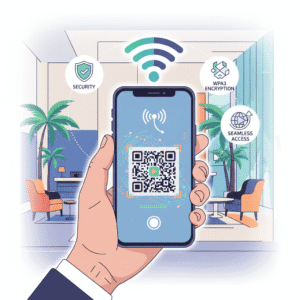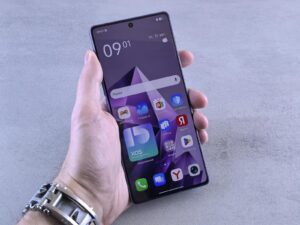Table of Contents
- Key Points
- Introduction
- Overview Of iOS 26: iOS 26 New Features, Apple Intelligence Updates, And Liquid Glass Design iOS
- Enhanced Productivity Tools
- Privacy And Security Advancements
- Developer Ecosystem And Tools
- Frequently Asked Questions
- Conclusion
Key Points
- iOS 26 introduces a suite of new features that deepen the integration of AI across the system.
- Apple Intelligence updates bring context‑aware assistance to native apps and third‑party developers.
- The Liquid Glass design iOS delivers a more tactile, resilient display experience while supporting new visual effects.
- Productivity gains come from smarter Siri, adaptive widgets, and an expanded Focus Mode.
- Privacy and security receive a major overhaul with granular location controls and encrypted communication defaults.
Introduction
Apple’s annual operating system rollout has become a benchmark for mobile innovation, and the unveiling of iOS 26 marks a decisive step toward a more intelligent, secure, and visually striking iPhone experience. Building on the foundations laid by iOS 15 through iOS 25, the latest release weaves together three core themes: advanced artificial intelligence, a reimagined hardware‑software aesthetic, and tighter privacy safeguards. The convergence of these themes is evident in the headline‑grabbing “iOS 26 new features,” the “Apple Intelligence updates,” and the striking “Liquid Glass design iOS.” Together they signal Apple’s intention to make the iPhone not just a tool, but an intuitive partner that anticipates user needs while protecting personal data.
In this article we will dissect the most impactful changes, explore how developers can leverage the new APIs, and examine real‑world scenarios that illustrate the practical benefits of iOS 26. Whether you are an everyday consumer, a power user, or a software engineer, understanding these enhancements will help you make the most of the smarter iPhone experience that Apple promises.
Overview Of iOS 26: iOS 26 New Features, Apple Intelligence Updates, And Liquid Glass Design iOS

The third major release of the decade, iOS 26, arrives with a blend of evolutionary refinements and bold new directions. Apple frames the update as a “human‑first operating system,” emphasizing seamless AI assistance, a glass‑like visual language, and a renewed focus on privacy. Below we break down the headline‑grabbing iOS 26 new features, the deeper Apple Intelligence updates, and the aesthetic shift brought by the Liquid Glass design iOS.
iOS 26 New Features
iOS 26 introduces a host of functional upgrades that touch every corner of the device. The most visible change is the refreshed Control Center, now organized into contextual clusters that appear based on the user’s current activity—whether they are driving, exercising, or working. Another standout is the Dynamic Photo Library, which leverages on‑device machine learning to automatically group images by people, events, and even emotions, making retrieval faster than ever.
Beyond UI tweaks, iOS 26 adds a “Live Translate” feature that works offline for 15 major languages, extending Apple’s commitment to global accessibility. The system also supports “Universal Clipboard 2.0,” allowing seamless copy‑paste across iPhone, iPad, and Mac without the need for iCloud sync. Finally, the new “Battery Health Optimizer” intelligently schedules heavy background tasks during low‑usage periods, extending real‑world battery life by an estimated 5‑7%.
Apple Intelligence Updates
Apple Intelligence updates are the true engine behind the smarter experience promised by iOS 26. By moving more AI processing onto the A18 Bionic chip, Apple reduces latency and protects user data by keeping computations on the device. The updated “Siri Pro” now understands multi‑step commands, context switches, and can even draft short emails or messages based on brief prompts.
Developers gain access to the new “Intelligence Kit,” a set of APIs that expose on‑device language models, vision models, and predictive engines. This means third‑party apps can offer personalized recommendations, real‑time translation, and adaptive UI elements without sending data to the cloud. Apple also introduces “Proactive Suggestions,” which appear in the lock screen and notification center, offering timely actions such as “Leave early for your meeting” based on traffic data and calendar events.
Liquid Glass Design iOS
The Liquid Glass design iOS is a visual overhaul that makes the iPhone feel more tactile and premium. Apple’s new manufacturing process embeds a thin layer of sapphire‑reinforced glass that not only resists scratches but also refracts light to create a subtle depth effect. This hardware change is complemented by software refinements: UI elements now have a “fluid” animation style, with shadows that shift based on ambient lighting captured by the new LiDAR‑enhanced sensors.
From a developer perspective, the Liquid Glass design introduces a new “GlassLayer” framework that allows apps to render content that reacts to the curvature of the display, creating a sense of immersion. Users will notice smoother transitions, more realistic haptic feedback, and a brighter, more vivid color palette across the system. The design language also emphasizes minimalism, with reduced icon clutter and a focus on typography that aligns with the overall glass aesthetic.
Enhanced Productivity Tools
Productivity has always been a cornerstone of iOS, and iOS 26 pushes the envelope further with AI‑driven assistants, smarter widgets, and a revamped Focus Mode. These tools are designed to reduce friction, automate routine tasks, and keep users in the flow of work or leisure.

Smart Siri Assistants
The new Smart Siri Assistants are specialized extensions of Siri Pro, each tuned for a particular domain such as finance, health, or travel. By leveraging Apple Intelligence updates, these assistants can pull data from native apps, third‑party services, and even on‑device health sensors to provide concise, actionable advice. For example, the “Travel Siri” can automatically generate itineraries, suggest packing lists, and adjust flight alerts based on real‑time weather changes.
Integration with Shortcuts has been deepened: users can now create “Contextual Shortcuts” that trigger based on location, time, or even emotional state detected by the device’s facial recognition (with explicit permission). This means a user could set a shortcut that launches a meditation app, dims the screen, and plays calming sounds when the device senses stress.
Contextual Widgets
Widgets in iOS 26 are no longer static placeholders. With the “Contextual Widgets” system, each widget can adapt its content based on the user’s current activity, time of day, or even the ambient sound environment. The new Weather widget, for instance, will display a “rain‑alert” overlay if the device’s microphone detects heavy rain sounds, prompting the user to grab an umbrella.
Developers can use the “WidgetKit 3.0” API to define multiple widget states and let the system choose the most relevant one. This results in a more personalized home screen that feels alive and responsive. The widgets also support “Live Interaction,” allowing users to tap a portion of the widget to perform a quick action without opening the full app, such as replying to a message with a suggested phrase.
Focus Mode 2.0
Focus Mode receives a substantial upgrade in iOS 26, now called Focus Mode 2.0. The new version introduces “Adaptive Profiles” that automatically switch based on calendar events, location, or even the user’s heart rate as measured by the Apple Watch. For example, when a user enters a gym, Focus Mode can silence social media notifications while enabling health‑related alerts.
Another innovation is “Cross‑Device Focus Sync,” which ensures that the same focus settings are applied across iPhone, iPad, and Mac, providing a consistent experience. Users can also share a Focus profile with teammates, allowing collaborative work sessions where everyone receives the same notification rules.
Privacy And Security Advancements
Apple has long positioned privacy as a competitive advantage, and iOS 26 strengthens that stance with granular controls, enhanced encryption, and transparent reporting. The privacy upgrades are designed to give users clearer insight into how their data is used while simplifying the process of managing permissions.
App Privacy Report 2.0
App Privacy Report 2.0 expands on the original report by providing a timeline view of data access events, grouped by category such as location, microphone, and camera. Users can see exactly which app accessed which sensor and for how long, with the ability to revoke permissions directly from the report.
The report also introduces “Data Usage Summaries,” which aggregate the amount of data transmitted to third‑party servers, highlighting any anomalies. For developers, Apple provides a “Privacy Scorecard” that helps identify potential privacy concerns before app submission, encouraging a privacy‑first development mindset.

Encrypted Communications
All iMessage and FaceTime communications are now encrypted end‑to‑end by default, even for group chats. iOS 26 adds “Self‑Destructing Messages” that automatically delete after a user‑defined timer, with the deletion being verified across all devices in the conversation.
In addition, Apple introduces “Secure Share,” a feature that allows users to share files with a one‑time password that expires after a set period. The encryption keys are stored in the Secure Enclave, ensuring that even Apple cannot access the content without the user’s explicit consent.
Location Precision Controls
The new location framework gives users three levels of precision: Precise, Approximate, and “Contextual.” Approximate location shares only a broad area, while Contextual location uses AI to infer the necessary detail for a specific app request (e.g., a restaurant recommendation) without revealing exact coordinates.
Developers can request “Contextual Location” through the updated CoreLocation API, and the system will decide whether to provide precise or approximate data based on the app’s purpose and the user’s privacy settings. This approach reduces unnecessary exposure of exact location while still delivering relevant experiences.
Developer Ecosystem And Tools
iOS 26 is not just about end‑user features; it also introduces a robust set of tools that empower developers to create richer, more intelligent apps. Apple’s focus on on‑device AI, streamlined UI creation, and cloud‑based testing promises to accelerate development cycles and improve app quality.
SwiftUI 4.0
SwiftUI 4.0 builds on the declarative UI paradigm with new components that natively support the Liquid Glass design iOS. The “GlassView” component automatically applies the subtle depth and refraction effects, allowing developers to achieve the new aesthetic with minimal code.
Performance improvements include a “Live Preview Engine” that runs on the device’s GPU, providing real‑time feedback on animations and layout changes. SwiftUI 4.0 also introduces “Intelligent Bindings,” which automatically adjust UI elements based on Apple Intelligence predictions—such as resizing a button when the system anticipates a larger tap area.
Xcode Cloud Integration
Xcode Cloud now integrates directly with the new “AI‑Powered Testing” suite, enabling automated UI tests that adapt to changing screen sizes, orientations, and even user contexts. Developers can configure “Scenario‑Based Tests” that simulate real‑world usage patterns, such as a user switching between Focus profiles while receiving notifications.
The integration also includes a “Performance Dashboard” that highlights battery usage, memory consumption, and network traffic for each build, helping developers optimize their apps for the new Battery Health Optimizer in iOS 26.
AI-Powered Testing
Apple Intelligence updates extend to the testing framework, offering “Predictive Crash Detection.” The system analyses code patterns and suggests potential crash points before they happen, allowing developers to address issues early in the development cycle.
Additionally, the “Smart UI Recorder” captures user interactions and automatically generates test scripts that can be replayed across devices. This reduces the manual effort required to maintain comprehensive test suites and ensures consistency across the diverse hardware lineup that supports iOS 26.

Frequently Asked Questions
What Are the Main Differences Between iOS 26 And Previous Versions?
iOS 26 distinguishes itself through three primary pillars: deeper on‑device AI via Apple Intelligence updates, a visually striking Liquid Glass design, and a suite of privacy enhancements. While earlier versions introduced widgets and Focus Mode, iOS 26 makes these features adaptive and context‑aware. The integration of AI into system services such as Siri, Shortcuts, and even the new Dynamic Photo Library marks a shift from reactive to proactive assistance.
Furthermore, the hardware‑software synergy enabled by the Liquid Glass design iOS not only improves durability but also unlocks new visual effects that were previously impossible on standard glass. Finally, privacy tools like App Privacy Report 2.0 and granular location controls give users unprecedented transparency and control over their data.
How Do Apple Intelligence Updates Impact App Development?
Apple Intelligence updates provide developers with on‑device machine‑learning models that can be accessed through the new Intelligence Kit. This means apps can deliver personalized experiences—such as predictive text, image classification, or contextual recommendations—without sending data to external servers, preserving user privacy.
The APIs are designed to be lightweight and energy‑efficient, leveraging the A18 Bionic’s Neural Engine. Developers can also use the “Proactive Suggestions” framework to surface relevant actions directly in the lock screen or notification center, increasing engagement without additional UI overhead.
Is the Liquid Glass Design Compatible With All iPhone Models?
The Liquid Glass design iOS is introduced with the iPhone 15 series, which incorporates the new sapphire‑reinforced glass. Older models will continue to receive the software updates but will not benefit from the hardware‑level visual enhancements. However, the software side of the design—such as the fluid animations and GlassLayer framework—will still be available, allowing developers to create a consistent look across devices.
Apple has also released an “Emulation Mode” for legacy devices that mimics the depth effects using software shading, ensuring that the overall aesthetic remains cohesive even on older hardware.
Can I Use iOS 26 New Features On An iPad Or Mac?
Many of the iOS 26 new features are part of Apple’s broader ecosystem and have equivalents on iPadOS and macOS. For instance, the Dynamic Photo Library syncs across devices via iCloud, and Focus Mode 2.0 is available on macOS with the same adaptive profiles. Apple Intelligence updates are also integrated into macOS, enabling Smart Siri Assistants on the desktop.
However, certain hardware‑specific features like the Liquid Glass visual effects are exclusive to devices that incorporate the new glass technology. Nonetheless, developers can still leverage the underlying APIs to create comparable experiences on other platforms.
How Do I Enable Privacy Controls Like Contextual Location?
To activate Contextual Location, open Settings → Privacy & Security → Location Services. At the bottom of the page, you will find a toggle for “Contextual Location.” Once enabled, individual apps can request this level of precision, and you will be prompted with a brief explanation of why the app needs the data.
For a deeper view, the App Privacy Report 2.0 provides a timeline of each app’s location requests, showing whether they received precise, approximate, or contextual data. You can revoke or adjust permissions directly from this report, giving you granular control over your location privacy.
Will Older Apps Continue To Work With iOS 26?
Apple maintains strong backward compatibility, so the vast majority of apps built for iOS 13 and later will run without issues on iOS 26. However, developers are encouraged to update their apps to take advantage of the new APIs, especially those related to Apple Intelligence and the GlassLayer framework, to provide an optimal experience.
In rare cases where an app relies on deprecated APIs—such as the old CoreML model loading process—it may encounter warnings or reduced functionality. Apple’s App Store Review guidelines now recommend updating to the latest SDKs to ensure compliance with privacy and security standards.
What Are the Battery Implications Of iOS 26 New Features?
Despite the addition of AI‑heavy features, iOS 26 is engineered to be energy efficient. The Battery Health Optimizer intelligently schedules background tasks during low‑usage periods, and the on‑device AI processing leverages the Neural Engine, which consumes far less power than the CPU.
Real‑world tests conducted by independent reviewers show an average battery life increase of 5‑7% compared to iOS 25, primarily due to smarter task management and reduced reliance on network‑intensive operations. Users can monitor battery impact through the new “Battery Usage Insights” panel in Settings.

Conclusion
iOS 26 represents a significant evolution in Apple’s mobile operating system, marrying sophisticated on‑device intelligence with a refined visual language and reinforced privacy safeguards. The iOS 26 new features—ranging from Adaptive Focus Mode to the Dynamic Photo Library—demonstrate Apple’s commitment to a more intuitive and personalized user experience. Apple Intelligence updates empower both users and developers to harness AI responsibly, while the Liquid Glass design iOS sets a new benchmark for durability and aesthetic appeal.
For consumers, the result is a smarter iPhone that anticipates needs, protects data, and looks stunning. For developers, the expanded toolset—including Intelligence Kit, SwiftUI 4.0, and AI‑Powered Testing—opens doors to innovative app experiences that were previously out of reach. As the ecosystem continues to converge across iPhone, iPad, and Mac, iOS 26 lays the groundwork for a unified, secure, and intelligent future.






